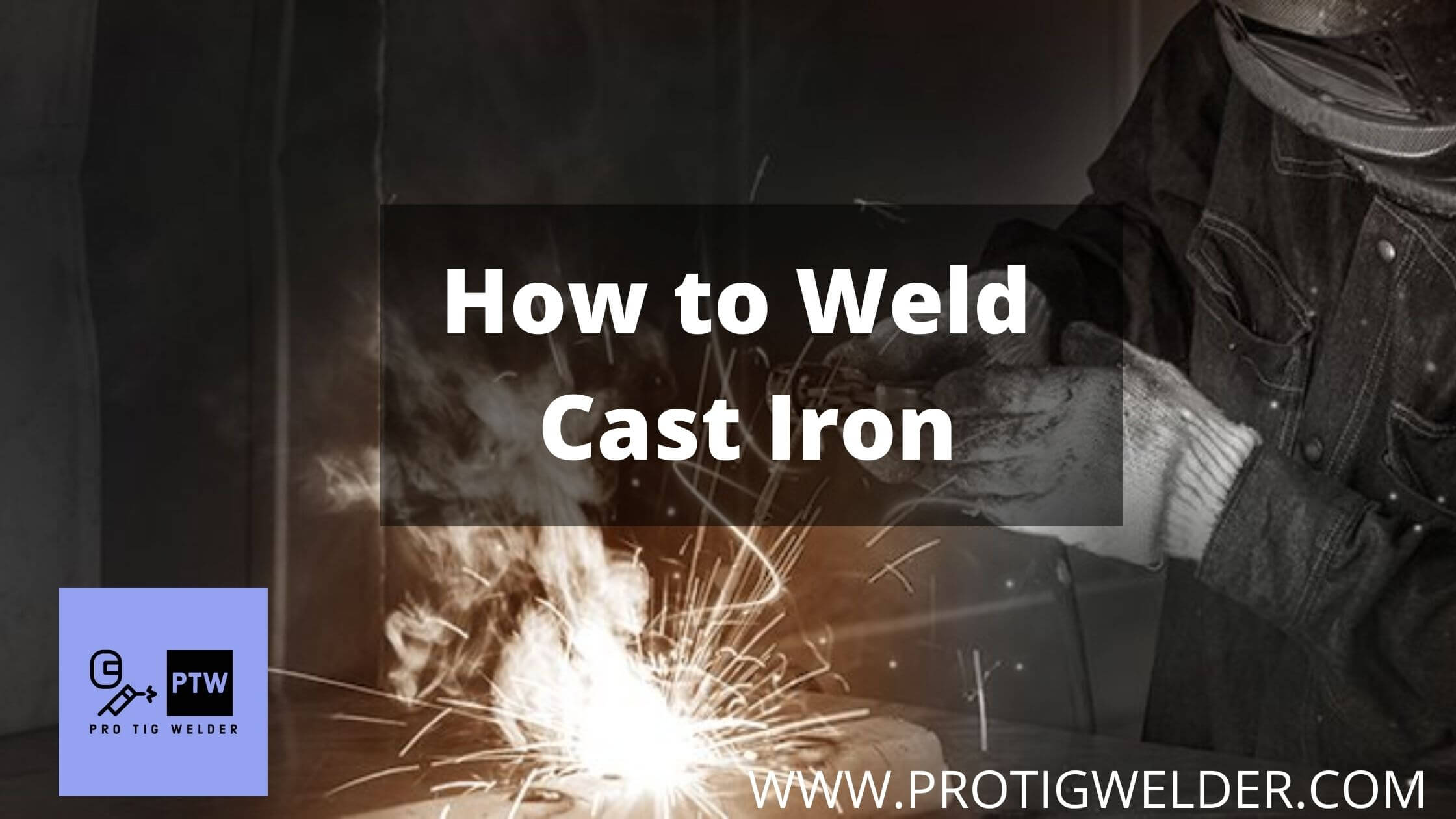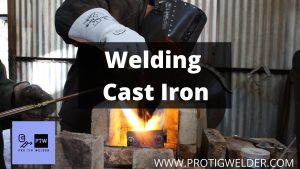Cast iron is one of the most commonly used materials for cooking, but it’s also easy to accidentally injure yourself with. Cast iron is more than just a pot that cooks your food-it’s a valuable resource that you can reuse and resell on eBay or Craigslist! It pays to know how to weld cast iron, so let’s explore some ways of doing so!
The first step in welding cast iron is making sure that both sides are clean before starting. You will need water and soap; take care not to use steel wool as this will scratch the surface of the material. The next step involves using flux (soldering) which helps end two pieces together by filling gaps between them. This will help prevent oxidation from occurring during the process.
Now you need a welding rod. The kind of welding rod used for cast iron is different from the kind used for steel because it has additives that help prevent oxidation from occurring during the process, which would ruin your work. : NOTE – You can get flux from Radio Shack or any other hardware store.
Once you have all these supplies plus your welding iron, you are ready to go! Using your flux, apply a thin layer to both sides of the area where you want to weld. Now hold your rod as close as possible and begin welding by placing it on top of the two areas that need support and pulling it across the surfaces at a 45-degree angle.
What is Cast Iron and Why do People Use it?
Cast iron is a type of metal that is heated and then molded into desirable shapes. Cast iron has been around for centuries; we know some cases where it was mined at least 3,500 years ago. It’s easy to heat up, shape and mold like other materials like wood or clay, but it also works well in fireplaces and ovens because of its low melting temperature (about 1000°F). This makes cast-iron pots ideal for both cooking and heating things up.
The benefits of welding cast iron:
– You’ll save a lot of money.
– It’s better for the environment.
– Gain skills that will make you more employable in the future.
– Gain skills that you can use to start your own business.
– Fun project to do with friends and family members.
– Weld cast iron is likely stronger than the original cast iron.
– It’s a valuable skill that will be useful for life!
Common Mistakes When Welding Cast Irons
A common mistake that is made when welding cast irons is to use too much flux. Too much flux can lead to a dirty, rusty weld and leave toxic fumes in the air. Sometimes it’s better to use less than more- even if you feel like you need more.
Another common mistake that is made when welding cast iron is not having the proper equipment needed to do the job. This could include wearing gloves, using protective clothing, and using safety goggles to protect your eyes from flying chips or slag. It’s better to have the right gear than it is to need it at a later time.
If you don’t have the equipment needed to weld cast iron, you should research what you need and make sure to buy it before you buy your first home welding kit.
Safety Precautions for Welding Cast Irons
Welding cast iron can be a dangerous activity if you’re not careful. Here are some safety precautions to keep in mind:
-Wear safety goggles and gloves to protect your eyes and hands
-Make sure the area you’re welding in is well-ventilated, as the fumes from welding can be harmful
-Don’t weld near flammable materials or liquids.
-Cast irons cause fires to spread faster than other materials, so make sure your welding area has a fire extinguisher nearby.
What you’ll need:
-Safety goggles and gloves (optional)
-Welding mask (optional)
-Fire extinguisher (recommended)
-Plenty of ventilation
-Tongs, pliers, etc.
-Welding gun (most cast irons can be welded with an electrode or flux-cored variety of welding gun)
-Some steel wire (optional)
What you’ll do:
1. Wear your safety gear and make sure the area has plenty of ventilation
2. If you have a gas mask or welding helmet that’s intended for flux-cored welding, then put it on now.
3. Make sure the area is clear of any flammable materials and liquids-if you’re planning to weld near spilled gasoline or oil, don’t do it!
4. Welding cast iron is usually done in a room with an exhaust fan.
5. Welding cast iron can get very hot, so make sure you have plenty of water close by to douse the piece after welding.
6. Start off by preparing your welding gun-if you’re using an electrode variety, make sure the lead’s positive lead is securely attached to the gun.
7. Prepare your cast iron by making sure there are no cracks or holes in it, and that the piece is free of rust-if you’re starting with an old pot, clean it thoroughly before attempting to weld it.
8. Once you’ve prepped your cast iron, clamp the piece securely to your welding table.
9. Set your ground clamp on the opposite side of your cast iron so that it’s touching part of the piece that isn’t to be welded, or simply set it far away from the surface you’re trying to weld if there are no other options.
10. Make sure your welding gun is secure and in position.
11. Once you’ve clamped your cast iron down, turn on the welding gun and wait for it to heat up-this should take about one minute, but might be longer depending on what kind of welding gun you’re using.
12. Slowly bring your welding wire or rod into contact with the piece.
13. Slowly move the welding wire or rod around to make sure you’ve covered the whole area, and slowly back away from the piece after making sure it’s welded properly.
14. Douse your cast iron with water once you’re done welding-it should be cool enough for you to handle by now. Removing the clamp, take it over to a sink or outside and douse it with water. It’s recommended that you give the piece a few minutes to dry off before doing anything else with it.
What not to do:
-Don’t weld your cast iron in an area with little ventilation
-Don’t move the welding rod too quickly or else it will form large, impure welds that are susceptible to breaking
-Don’t leave your cast iron in the clamps for longer than you have to.
-Don’t use an electrode variety of welding guns if flux-cored is available, as they produce cleaner welds. Once again, this information is specifically for repairing cast iron cookware. Welding cast iron has a lot of dangerous hazards, so if you’re not the risk-taking type then it’s probably best that you do something else with your cast iron. If you follow these instructions and have some patience, welding cast iron isn’t too difficult!
Tips For Working with a Welder On Your Own or With Someone else’s Help
Welders come in all shapes and sizes, and so do the projects you might want to tackle with one. Whether you’re working on a DIY project or trying to fix something around the house, here are a few tips for getting the most out of your welder:
-If you’re working on a project by yourself, make sure the welder is in a stable position before turning it on. It’s also important to wear the right safety gear while welding!
-If you’re working with someone else, make sure you both know how to use the welder safely. Communication is key when it comes to welding-so be sure to talk about what each of you is doing and watch each other’s work closely.
-If you’re working on an especially large project, consider working in sections. It’s much easier to work on a smaller piece at a time instead of trying to finish the whole thing in one go.
-Make sure you have all the necessary tools before tackling your welding project. Make a list of each tool that you might need, and make sure to have them on hand.
-Make sure you don’t lean over the welder as if it were a campfire or sidewalk chalk. This can cause your shirt to catch fire! Make sure your welding helmet is securely in place, and that any loose clothing has been removed.




![How to Weld with Flux Core | [Ultimate Guide by PROTIGWELDER] how to weld with flux core](https://protigwelder.com/wp-content/uploads/2022/01/how-to-weld-with-flux-core-1-150x150.jpg)
![How to Weld Stainless Steel? [Complete Guide] | PROTIGWELDER How to Weld Stainless Steel](https://protigwelder.com/wp-content/uploads/2021/12/How-to-Weld-Stainless-Steel-1-150x150.jpg)
![How to Reduce Weld Spatter | [Ultimate Guide 2022] How to Reduce Weld Spatter](https://protigwelder.com/wp-content/uploads/2022/01/How-to-Reduce-Weld-Spatter-1-150x150.jpg)
![What Is Friction Welding Process? | [Best Guide - PROTIGWELDER] What Is Friction Welding Process](https://protigwelder.com/wp-content/uploads/2022/01/What-Is-Friction-Welding-Process-150x150.jpg)

![Yeswelder MIG-205DS Reviews [2022] | PROTIGWELDER Yeswelder MIG-205DS Reviews](https://protigwelder.com/wp-content/uploads/2022/01/Yeswelder-MIG-205DS-Reviews-150x150.jpg)
![What is Spot welding? And How Does It works? [PROTIGWELDER] what is spot welding](https://protigwelder.com/wp-content/uploads/2022/01/what-is-spot-welding-1-150x150.jpg)

![Best TIG Welder for Beginners 2023 | [Ultimate Buying Guide] best tig welder for beginners](https://protigwelder.com/wp-content/uploads/2021/11/best-tig-welder-for-beginners-150x150.jpg)
![Best TIG Welder Under 1000 | [Ultimate Guide - 2023] best tig welder under 1000](https://protigwelder.com/wp-content/uploads/2021/11/best-tig-welder-under-1000-150x150.jpg)